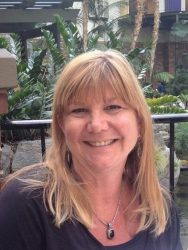A Nurse’s Story: Four Months of TM

I had heard of Transcendental Meditation (TM) as a teenager in the 70’s, but didn’t know much about it. Then, several months ago, during a particularly difficult time, I began searching for a stress reduction tool. It is said, “ask and ye shall receive,” and a gift was handed to me. Upon opening an email at work (I am an RN at a community hospital) I learned that there was a program being sponsored to teach the TM technique to nurses! Not only was it perfect timing, but it also offered very significant tuition reimbursement—a wonderful stress reducer in itself! This was my “sign,” a nod from the universe that this technique was meant to be learned.
So, I did some research, attended the introductory lectures, and learned more about the broad and practical applications of the TM program. I was amazed by the extensive body of
research-based evidence that supports the benefits and effectiveness of this technique. I found that TM is utilized for a myriad of reasons: from personal growth and stress reduction to PTSD and violence-reduction initiatives in schools, and even to combating compassion fatigue among healthcare workers. Amazing! Intrigued, I signed up.
Then began the actual instruction: tutelage by a wonderful certified TM teacher who was trained by Maharishi Mahesh Yogi himself, the founder of the Transcendental Meditation Program. (How cool is that?!?) Her experience, enthusiasm, and expert instruction was personalized, supportive, and comprehensive. Before learning, I had wondered, “Could I actually do this? Quiet my ever-chattering thoughts? Achieve a state of transcendence?”
Introductory lectures lay the groundwork for the hows, whats, and whys of the practice. Then, during a one-on-one individualized tutorial, each newcomer is given personal instruction in the TM technique. Subsequent classes layer additional insights and information, answering questions often even before they are verbalized. Classes begin with greetings and introductions. Refreshment breaks offer the opportunity for networking as my teacher, who loves her nurses, always makes a special point of introducing caregivers to each other. Nurses are a species unto themselves. What a vastly varied group of fellow students and seekers! Then, my personal highlight of the evening—the group meditation. Helpful to all levels of TM practitioners, the group meditation fostered a sense of community within the group and allowed for a mutual experience which lent itself to later discussion. While we all came from different places and for different reasons, every “TM-er” contributed and benefited from the amplified energy of the group. (It draws you in and surrounds you with a sense of peace and tranquility). No one is ever made to feel as though they are doing anything less than succeeding on their unique path.
Now, as a participant in a research study at my hospital focused on documenting the effects of TM on compassion fatigue, I believe that TM can make a positive difference for both practitioners and the patients entrusted to our care. The calm, clarity, and strength that I have found through this meditation is now imbedded and reflected in my practice of nursing. It has helped me preserve my passion, thwart burnout, and prevent dissociation from my patients.
Deeply passionate as a critical care nurse in a large academic hospital, after two decades of extreme acuity, I was so weary of the pain and death that I was completely “burned out.” I was the poster child for “compassion fatigue” and nearly abandoned nursing. I wish that I had discovered TM years ago. I believe it would have changed the course of my career.
With so many notable benefits from the TM practice, perhaps the most important and intriguing is the evidence that supports the TM program’s “one percent effect.” Also known as “the Maharishi Effect” and what some people refer to as the “Popcorn Effect,” evidence shows that when just one percent of a given population regularly practices TM, the dynamic experience of an entire group can be influenced toward greater harmony, cooperation, and peacefulness. Now, more than ever, not only is TM about personal growth, health, and transcendence, but also about changing the world for the better—one small group at a time. Imagine if one percent of the nurses at HMC could produce such resonance within our own community, here and now!
It has been four months since I have learned the TM technique and have made it a part of my daily routine. I have noticed many positive changes since integrating the meditation into my life. I sleep better, the night terrors that I have suffered from for years have all but ceased, I am quicker to laugh, slower to anger, more forgiving, and my general mood has become more positive and optimistic. While I still struggle with fitting in my meditation to my schedule twice a day, I diligently continue, striving to become that one percent in my own small community. We can change the world, 1% at a time.
About the Author
Nancy is a Registered Nurse at Hunterdon Medical Center in Flemington, New Jersey





